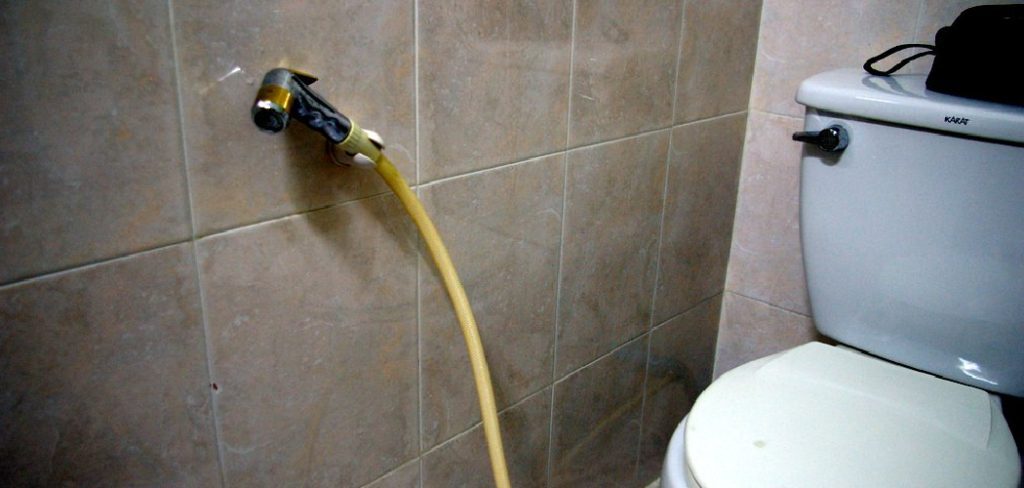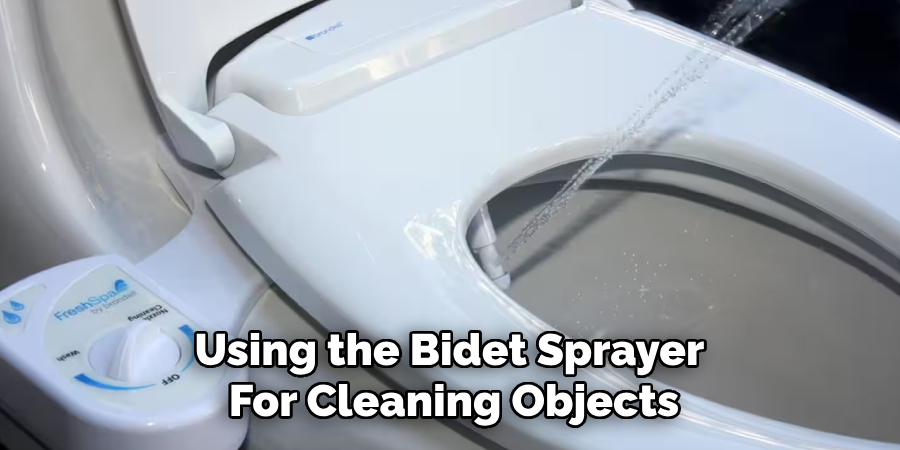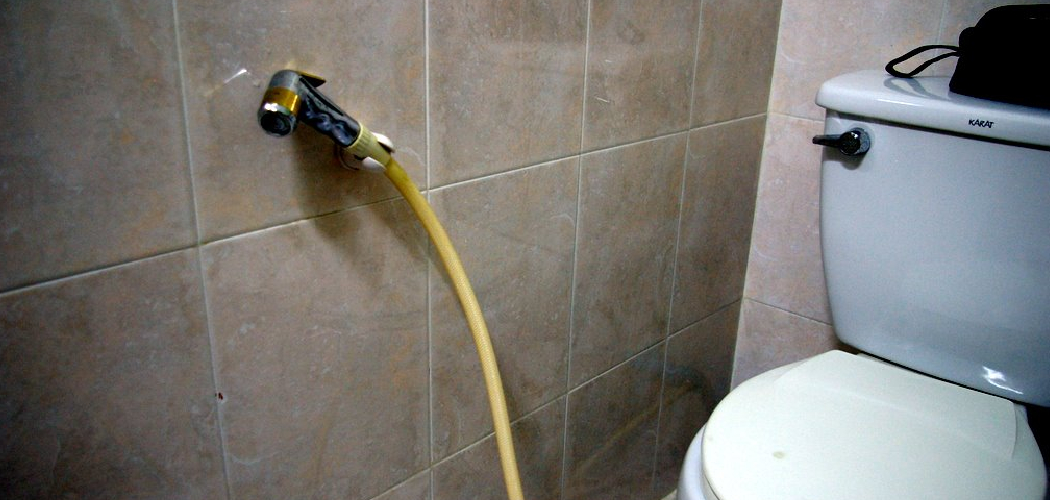A bidet sprayer, also known as a handheld bidet or shattaf, is a popular hygiene tool used in many parts of the world, particularly in Asia, the Middle East, and Europe. It is designed to provide a practical and refreshing cleaning experience after using the toilet, offering an alternative to the exclusive use of toilet paper. Bidet sprayers consist of a small handheld nozzle connected to a hose, allowing users to direct water for cleaning easily and precisely.

The benefits of using a bidet sprayer are numerous. It significantly reduces the reliance on toilet paper, making it an eco-friendly option that helps conserve natural resources. Additionally, it promotes better personal hygiene by providing a thorough and gentle cleaning experience, reducing the chances of irritation or discomfort.
This article aims to provide a step-by-step guide on how to use bidet sprayer correctly and comfortably, including instructions for setup, proper usage, and regular maintenance.
Understanding What a Bidet Sprayer Is
A bidet sprayer, often referred to as a handheld bidet, is a simple yet versatile device designed to offer a hygienic and eco-friendly cleaning solution. It typically consists of a handheld nozzle connected directly to the toilet’s water supply via a flexible hose. This setup allows users to manually control the direction and water pressure for a tailored cleaning experience.
Different types of bidet sprayers are available to suit varying preferences and bathroom setups. Wall-mounted sprayers are affixed to a nearby wall and come with a holder for easy access, while toilet tank-mounted sprayers attach directly to the toilet, offering a convenient installation option for limited spaces. Additionally, some models feature adjustable pressure controls, allowing users to customize the intensity of the water flow for added comfort.
A bidet sprayer is typically more affordable and easier to install than other types of bidets, such as standalone models or electric bidet seats. Standalone bidets require additional space and plumbing, while electric bidet seats often come with advanced features but at a higher cost. The simplicity and cost-effectiveness of bidet sprayers have contributed to their growing popularity, particularly in Western countries where eco-conscious lifestyles and a desire for improved personal hygiene are on the rise.

Before You Use It: Setup and Testing
Ensure Proper Installation
Before using your bidet sprayer, ensure it is properly installed. Check that the sprayer is securely connected to the water valve and threaded tightly to prevent any leaks. Ensure the T-valve is properly attached to regulate the water flow. A secure and leak-free installation is crucial for the sprayer’s effectiveness and to avoid potential water damage.
Testing the Water Pressure
Once installation is complete, it’s time to test the water pressure. Slowly open the water valve and point the sprayer into the toilet bowl. Squeeze the handle to check the spray strength. Adjust the T-valve as needed to control the water pressure comfortably. Avoid fully opening the valve initially, as high pressure may cause unintended splashes or discomfort during use.
Check the Reach and Positioning
Proper positioning of the bidet sprayer is key for ease of use. Confirm that the hose is long enough to reach while seated comfortably. The sprayer should also be mounted or placed conveniently, but out of the way when not in use. These steps help ensure a seamless and comfortable first-time use experience.
How to Use Bidet Sprayer – Step-by-Step Giude
Step 1: Sit on the Toilet
After you’ve finished using the toilet, remain seated. This position ensures proper alignment for effective and hygienic cleaning.
Step 2: Hold the Sprayer
Take the bidet sprayer in your dominant hand for better control. Position it beneath your body, ensuring the nozzle is aimed at the area you need to clean. Aiming in a front-to-back motion is recommended to maintain hygiene and prevent the spread of bacteria.
Step 3: Control the Water Pressure
Carefully squeeze the trigger on the sprayer to release water. Begin with light pressure to minimize splashing or discomfort. Adjust the pressure as needed to achieve a comfortable and effective clean.

Step 4: Clean Thoroughly
Gently move the sprayer to direct the water flow across the areas you wish to clean. Take your time and ensure all necessary areas are properly rinsed. This step may be repeated as needed for thorough cleaning.
Step 5: Dry Off
After cleaning, pat yourself dry using a small amount of toilet paper or a towel specifically designated for drying after bidet use. This step helps you feel refreshed while reducing excess moisture.
Proper use of a bidet sprayer requires minimal practice, and these steps ensure a hygienic and comfortable experience every time.
Tips for Clean and Comfortable Use
Using a bidet sprayer effectively requires a few simple habits to maximize hygiene and comfort.
Aiming Tips
Practice adjusting the angle of the sprayer to ensure thorough and mess-free cleaning. Start with a gentle spray and adjust as necessary to target the desired areas without excessive force. It may take a few tries to perfect your technique, but over time, it becomes second nature.
Avoiding Splash and Mess
To avoid unnecessary splashes, maintain an optimal spraying distance of about 4–6 inches from your body. Spraying too close can create an overly intense pressure, while spraying too far away may lead to less efficient cleaning. Finding the right distance ensures a more effective and clean experience.
Warming Up the Experience
If your bidet sprayer is connected to a warm water source, use lukewarm water for added comfort, especially during colder months. Ensure the water temperature is suitable before use to avoid discomfort or irritation.
Use in Shared Bathrooms
Be considerate of others when using a bidet sprayer in a shared bathroom. After each use, wipe down the sprayer to maintain cleanliness and hygiene. Always return it to its holster to keep it secure and ready for the next person.
Maintaining Your Bidet Sprayer
Proper maintenance of your bidet sprayer is essential to ensure its longevity and functionality. Follow these guidelines to keep your sprayer in top condition.
Daily Practices
Always turn off the water valve when the bidet sprayer is not in use. This prevents pressure build-up in the hose, reducing the risk of leaks or damage. To maintain hygiene and cleanliness, make it a habit to wipe down the sprayer head with disinfectant after each use.

Monthly Cleaning
To prevent mineral buildup and ensure optimal performance, soak the sprayer nozzle in vinegar or a mild disinfectant at least once a month. This helps remove limescale and any lingering residues. During this monthly routine, inspect the hose and valve for any signs of cracks, wear, or corrosion. Addressing these issues early can avoid more significant problems in the future.
Storage Tips
Always store the sprayer upright in the provided wall or tank holster. Proper storage keeps the sprayer secure, helps it stay clean, and avoids accidental damage when not in use. By incorporating these simple maintenance practices, you can prolong the life of your bidet sprayer and ensure a consistently comfortable experience.
Common Mistakes and How to Avoid Them
Spraying Too Hard
Excessive pressure while operating the bidet sprayer can lead to discomfort or unintended splashing. To avoid this, always use moderate pressure and adjust the intensity gradually until you find a comfortable flow that works for you.
Poor Aim
Aiming the sprayer improperly can lead to messes and inefficiency. Always direct the spray downward into the toilet bowl to minimize this risk. Avoid spraying upward or sideways to maintain cleanliness and proper usage.
Not Turning Off the Water
Leaving the water pressure on after use is a common mistake that can lead to hose leaks or bursts over time. To prevent unnecessary wear and potential water damage, ensure you turn off the water supply valve after each use.
Using It for Non-Intended Purposes
Using the bidet sprayer for cleaning objects it is not designed for can increase the risk of cross-contamination and damage. Always reserve your bidet sprayer solely for its intended personal hygiene purposes to maintain cleanliness and safe operation.
By being mindful of these common mistakes and taking the necessary precautions, you can ensure your bidet sprayer remains functional, hygienic, and long-lasting.

Conclusion
A bidet sprayer is a simple yet effective tool for improved personal hygiene. It works by delivering a controlled stream of water for cleansing, offering a more eco-friendly and sanitary alternative to toilet paper. Key practices, such as gentle use, correct aiming, and regular maintenance, are essential to ensure both comfort and longevity of the device. Learning how to use bidet sprayer properly may require a bit of practice, but the benefits are undeniable. Over time, it provides enhanced hygiene, reduces waste, and elevates your overall restroom experience, making it a worthwhile addition to daily routines.

